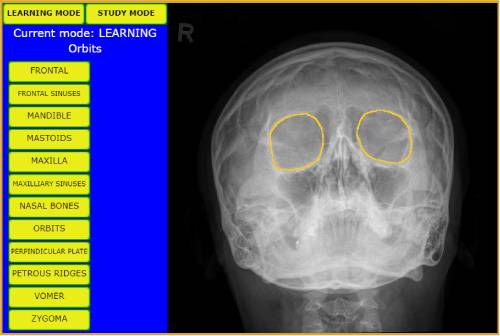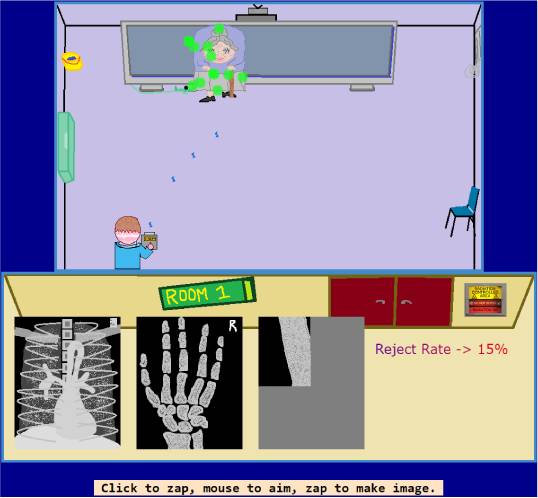Sources of error
Potential sources of error can be divided into two broad categories, intrinsic and extrinsic.
Intrinsic biases and errors originate with the reader – they are internal. These can be divided into two subcategories:
| Error/Bias | What is it? | How do we account for it? |
|---|---|---|
| Search error | The reader never fixates on the abnormality. | Use a methodical search pattern. |
| Recognition error | The reader fixates but does not recognise abnormality. | Methodical search pattern. Continuous professional development to improve skill. |
| Premature satisfaction of search | Search is discontinued after detection of an abnormality which can explain the patient presentation, further abnormalities may be missed. | Mentally “park” initial findings. Methodical, checklist search pattern. Be mindful of common injury combinations. Review areas. |
| Anchoring bias | Undue influence of initial impression has on the evaluation of subsequently collected information. | Assess all findings before settling on a diagnosis. Objectively consider alternate diagnoses. |
| Availability bias | Diagnostic assessment is unduly influenced by recent or easily recalled experiences (such as memorable/unusual cases or cases associated with personal error). | Refer to sources of information outside of personal experience (such as texts, peer reviewed publications or second opinions from colleagues. |
| Alliterative bias | Undue influence of previous/provisional reports or clinical information when comparing present study to previous studies. | Render an independent, objective interpretation prior to reviewing previous/provisional reports. |
| Framing bias | Tendency to be influenced by how a problem is presented or how a question is asked; a specific clinical question may draw attention away from other contextual findings. | Review study prior to reading the request so that findings are first assessed in relative isolation. Consider deep diving into electronic medical record or seeking further information from the referrer if required to get extra, necessary context for the study. |
| Attribution bias | Specific characteristics are attributed to an entity simply because to belongs to a specific class; ignoring/missing less frequent or unusual presentation of a pathology because appearances don’t conform to the “stereotype”. | Initially review study without knowing the clinical indication or patient demographic. Methodical search pattern. Review areas. |
| Blind spot bias | Heightened awareness of commonly missed/misinterpreted findings leading to overcalls. | Metacognition: increased awareness of this tendency to attempt to minimise occurrence. |
| Regret Bias | Overestimation of the likelihood of a particular pathology due to adverse outcomes associated with non-diagnosis of that pathology. | Use evidence-based criteria/processes to objectively state the probability of certain pathology to make a more unbiased recommendation for additional testing. |
| Hindsight bias | Tendency to overestimate the predictability of an event after the fact. The additional information gained since the original decision may make misses appear more egregious. | Promote a culture of learning from error, rather than blame; why, not who. |
Extrinsic biases and errors originate from a source other than the reader – they are external.
| Error/Bias | What is it? | How do we account for it? |
|---|---|---|
| Technical factors | Imaging protocol used may not lend to diagnosis of a pathology, particularly if the pathology present differs from that clinically suspected. Nonstandard projections due to patient condition, poor technique, under/overexposure. | Monitoring and alteration of systemic practices (i.e. do these views for this question), recommend recalls for additional/repeat under certain circumstances, temper opinion given with caveats regarding images provided (a “within limits” statement). |
| Working environment | Staff shortages – increased workload pressure. Time spent reporting. Workstation setup (comfort, lighting, adequacy). Interruptions, background noise, distractions. | Out/in-sourcing reporting non-urgent studies. Peer support. Limiting time of reporting sessions (4 hours or less per session). Adjustable, well calibrated workstations. Protecting readers from unnecessary interruption, sound/light proofing. |
| Availability of information | Previous studies not available for comparison. Incomplete clinical information. Lack of reference resources or peer support. Appropriate image annotation – HBL or turned lateral, supine or erect, AP or PA. | Digital picture archiving and medical record systems with consistent or cross-referenceable patient IDs. Rejecting incomplete referrals. Individual cognition of limitations and systemic availability of peer support (a duty Radiologist). |
| Communication | Typographical/transcription errors. Poor report structure. Inappropriate choice of vocabulary. Transmission of critical/urgent/unexpected findings. | Proofreading reports prior to authorisation. Use of a standard, easily followed report structure. System in place to alert referrer to critical/urgent or unexpected findings outside or adjacent to the normal channel of communication. |

